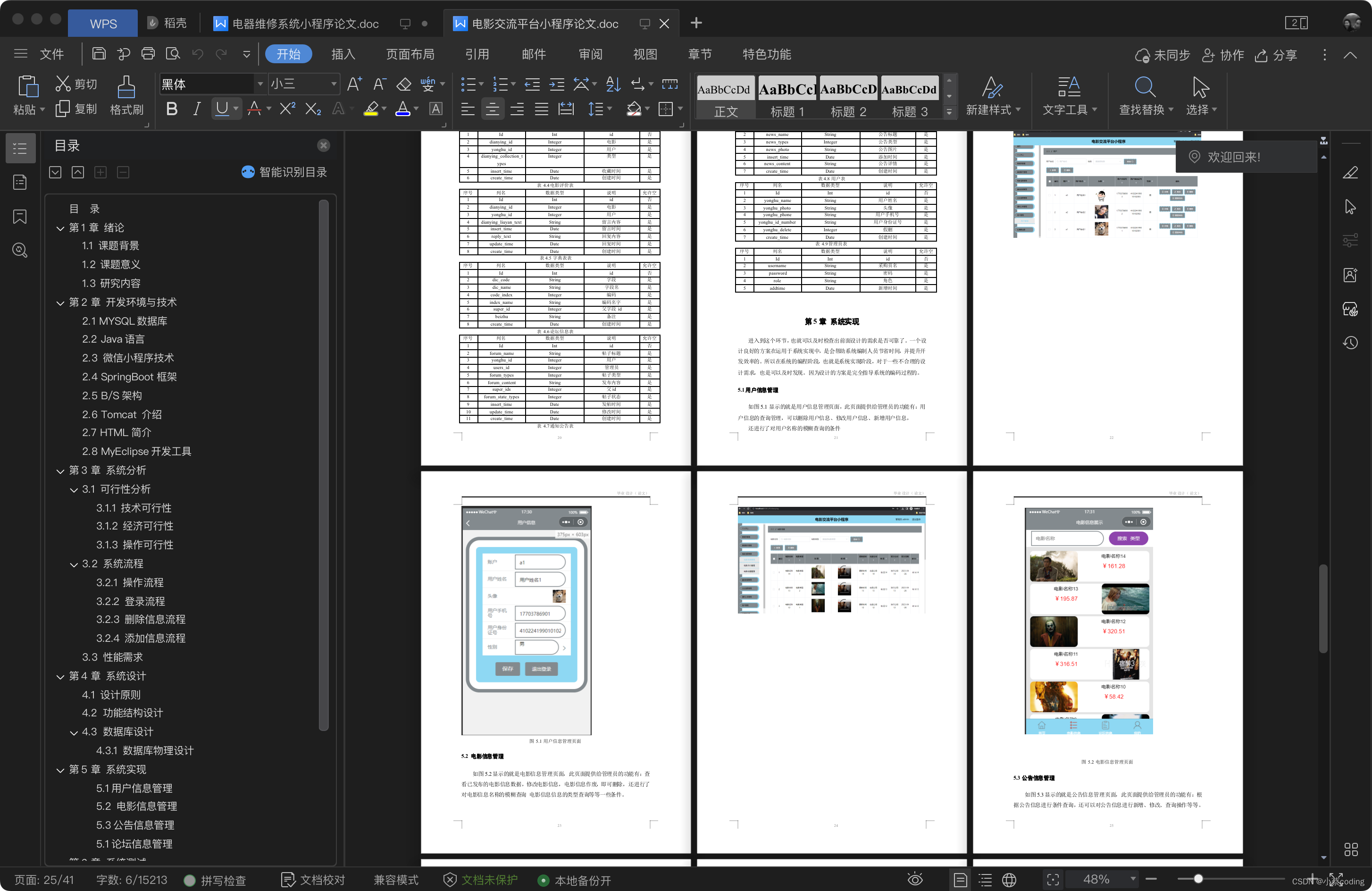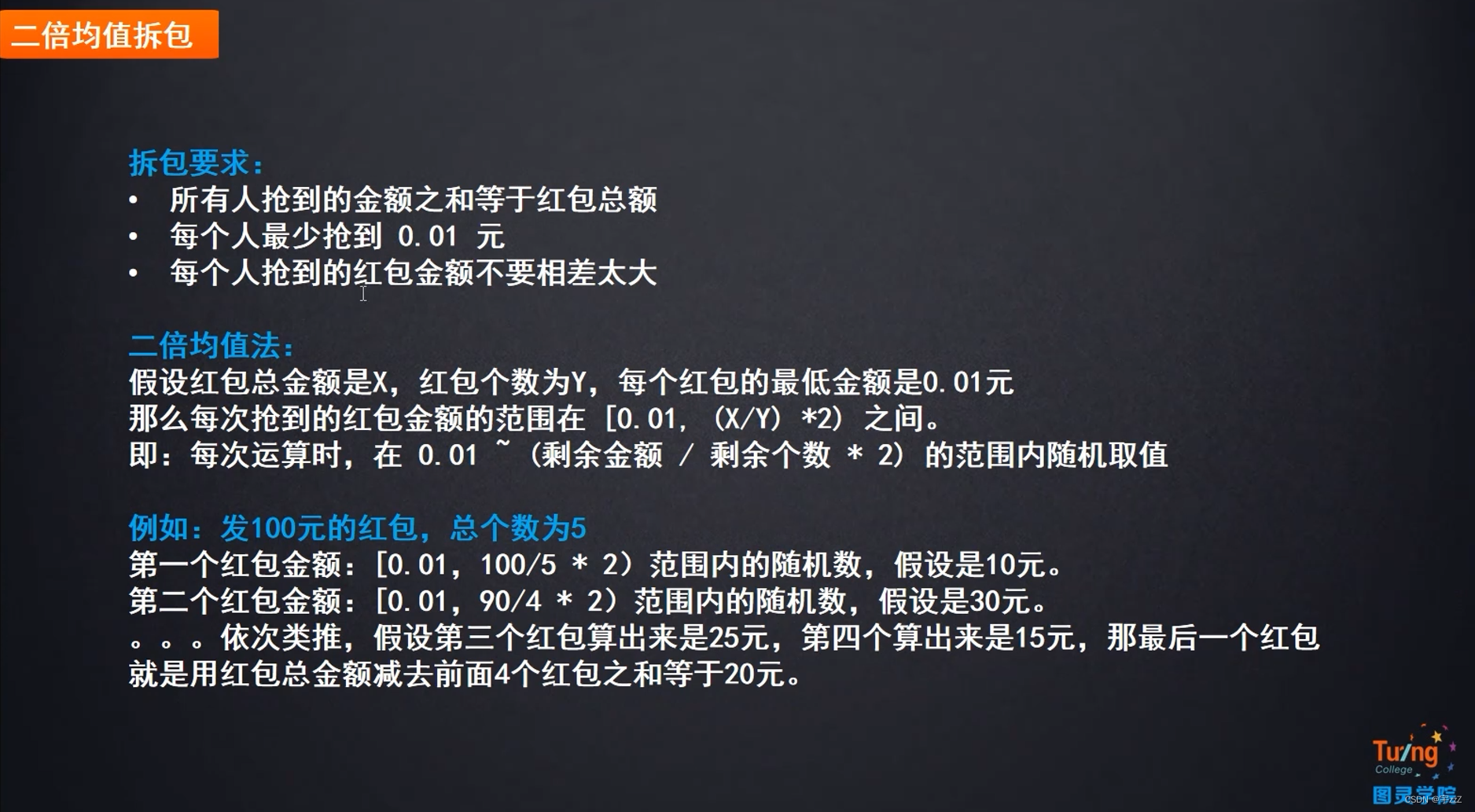Hunger games search: Visions, conception, implementation, deep analysis, perspectives, and towards performance shifts
期刊:Expert Systems With Applications SCI1区
主体框架
public HGS(){initialize();calculateFitness();sortTheFitness();calculateHungry();for (t = 0;t<T;t++){UpdateWeight();UpdateLocation();calculateFitness();sortTheFitness();calculateHungry();savePoints();}}
ps:经过多次的复现以后,我发现实现一个算法最快的方式就是先将算法分模块搞好,所以上来先贴一个框架图。
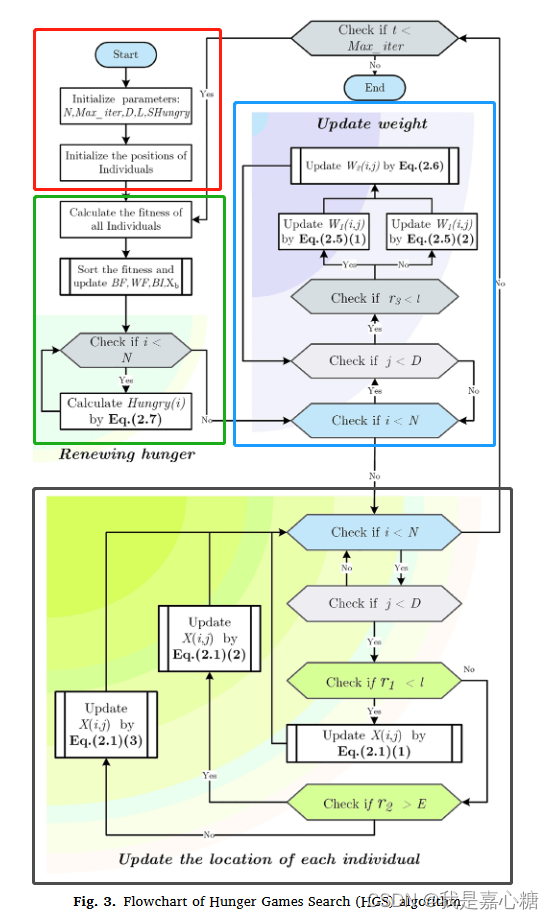
这篇论文主要分为四个模块,分别是初始化模块,适应度与饥饿值设置模块,权重更新模块,位置更新模块。
论文有意思的点:
在这篇文章里面的公式非常的多,但是在这里我只想着重介绍这篇论文的创新点:饥饿机制。
文章定义了一个叫饥饿值的东西,如下公式所示。我们发现当且仅当i适应度值最小的时候,饥饿值为0,别的情况饥饿值为上次的饥饿值加上H。也就是说,只要适应度高,那么就会越来越饥饥饿。后面我们再说这个饥饿度怎么用。值得注意的是:每一轮迭代都会更新一次hungry值
hungry ( i ) = { 0 , AllFitness ( i ) = = B F hungry ( i ) + H , AllFitness ( i ) ! = B F \text { hungry }(i)=\left\{\begin{array}{c}0, \text { AllFitness }(i)==B F \\\text { hungry }(i)+H, \text { AllFitness }(i) !=B F\end{array}\right. hungry (i)={0, AllFitness (i)==BF hungry (i)+H, AllFitness (i)!=BF
其中 B F BF BF为最差的适应度,也就是最小的适应度值。 H H H的定义如下所示
T H = F ( i ) − B F W F − B F × r 6 × 2 × ( U B − L B ) H = { L H × ( 1 + r ) , T H < L H T H , T H ≥ L H \begin{aligned}&T H=\frac{F(i)-B F}{W F-B F} \times r_6 \times 2 \times(U B-L B)\\&H=\left\{\begin{array}{c}L H \times(1+r), T H<L H \\T H, T H \geq L H\end{array}\right.\end{aligned} TH=WF−BFF(i)−BF×r6×2×(UB−LB)H={LH×(1+r),TH<LHTH,TH≥LH
其中 F ( i ) F(i) F(i)为适应度值, W F WF WF(Worse Fitness)为最大的适应度值(至今为止), U B 和 L B UB和LB UB和LB为问题空间的上下界。 L H LH LH(Limit Hungry)则为饥饿感的下限,r是一个随机值。
也就是说当适应度值 F ( i ) F(i) F(i)越小的时候, T H TH TH(Temp Hungry)会越小,当低于上限的时候,本轮增加的饥饿度 H H H,将会被设置为大于 T H TH TH的一个随机值。
我们从上面的三个公式只要知道一个关键结论就好了:
适应度越小,越不饥饿。
适应度越大,这轮增加的饥饿度越高。
那么这个饥饿度值该怎么用呢?
W 1 ( i ) → = { hungry ( i ) ⋅ N SHungry × r 4 , r 3 < l 1 , r 3 > l \overrightarrow{W_1(i)}=\left\{\begin{array}{c}\text { hungry }(i) \cdot \frac{N}{\text { SHungry }} \times r_4, r_3<l \\1, r_3>l\end{array}\right. W1(i)={ hungry (i)⋅ SHungry N×r4,r3<l1,r3>l
W 2 ( i ) → = ( 1 − exp ( − ∣ hungry ( i ) − SHungry ∣ ) ) × r 5 × 2 \overrightarrow{W_2(i)}=(1-\exp (-\mid \text { hungry }(i)-\text { SHungry } \mid)) \times r_5 \times 2 W2(i)=(1−exp(−∣ hungry (i)− SHungry ∣))×r5×2
论文构建了两个向量,分别是 W 1 ( i ) , W 2 ( i ) W_1(i),W_2(i) W1(i),W2(i),这两个向量负责对个体进行变异,这里最关键的点是 S H u n g r y SHungry SHungry,这是所有 h u n g r y hungry hungry的总和,我们可以发现,两个向量组的规律。
对于 W 1 ( i ) W_1(i) W1(i)而言,hungry越小,里面的值越小
对于 W 2 ( i ) W_2(i) W2(i)而言,hungry越小,里面的值越接近2也就是说里面的值越大。
X ( t + 1 ) → = { Game 1 : X ( t ) → ⋅ ( 1 + randn ( 1 ) ) , r 1 < l Game 2 : W 1 → ⋅ X b → + R ⃗ ⋅ W 2 → ⋅ ∣ X b → − X ( t ) → ∣ , r 1 > l , r 2 > E Game 3 : W 1 → ⋅ X b → − R ⃗ ⋅ W 2 → ⋅ ∣ X b → − X ( t ) → ∣ , r 1 > l , r 2 < E \overrightarrow{X(t+1)}=\left\{\begin{array}{c}\text { Game }_1: \overrightarrow{X(t)} \cdot(1+\operatorname{randn}(1)), r_1<l \\\text { Game }_2: \overrightarrow{W_1} \cdot \overrightarrow{X_b}+\vec{R} \cdot \overrightarrow{W_2} \cdot\left|\overrightarrow{X_b}-\overrightarrow{X(t)}\right|, r_1>l, r_2>E \\\text { Game }_3: \overrightarrow{W_1} \cdot \overrightarrow{X_b}-\vec{R} \cdot \overrightarrow{W_2} \cdot\left|\overrightarrow{X_b}-\overrightarrow{X(t)}\right|, r_1>l, r_2<E\end{array}\right. X(t+1)=⎩ ⎨ ⎧ Game 1:X(t)⋅(1+randn(1)),r1<l Game 2:W1⋅Xb+R⋅W2⋅ Xb−X(t) ,r1>l,r2>E Game 3:W1⋅Xb−R⋅W2⋅ Xb−X(t) ,r1>l,r2<E
最后,每轮迭代的时候都根据上面的公式对位置进行变换,在文中,l被设置为0.08,在公式1中,其实就是一个高斯变异,烟花算法也用到这个。
公式二和三,本质上是一个DE,差分进化的两个公式都是没头脑的,就算正向学习和反向学习,很多论文也有这个。最后还有个E,这个E也是作者自己设定的一个阈值,可以参照野狗群算法,不过作者将这个搜索阈值自己自定义了:
E = sech ( ∣ F ( i ) − B F ∣ ) E=\operatorname{sech}(|F(i)-B F|) E=sech(∣F(i)−BF∣)
( sech ( x ) = 2 e x + e − x ) \left(\operatorname{sech}(x)=\frac{2}{e^x+e^{-x}}\right) (sech(x)=ex+e−x2)
sech就是双曲正割函数
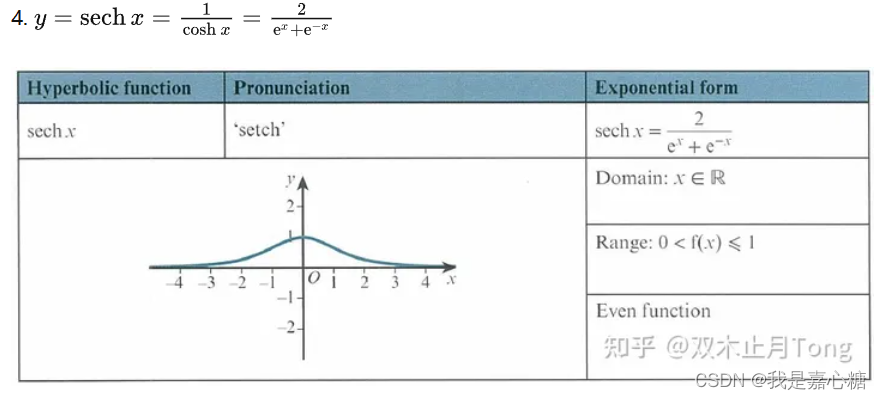
x越大,y越小,也就是说,当前解的适应度值越小,E就会越接近1,公式3被调用的概率就会变高。当前的解适应度越大,E就会越接近0,公式2被调用的概率越大。
最后再补充一个
R ⃗ = 2 × shrink × rand − shrink shrink = 2 × ( 1 − t T ) \begin{aligned}& \vec{R}=2 \times \text { shrink } \times \text { rand }- \text { shrink } \\& \text { shrink }=2 \times\left(1-\frac{t}{T}\right)\end{aligned} R=2× shrink × rand − shrink shrink =2×(1−Tt)
这个东西就是随着迭代次数,波动逐渐减少的向量,最后会收敛到0,值得注意的是R里面是有正有负的,意味着game2和game3是存在等效的情况。
实验的截图~

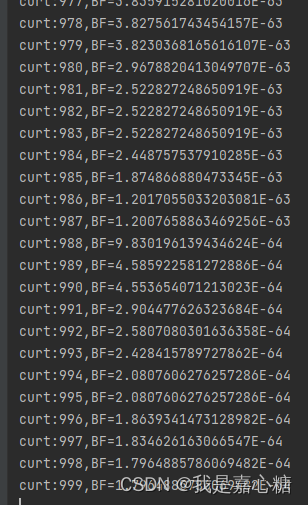
寻找sphere最小值。
实际代码
import javax.swing.*;
import java.awt.*;
import java.util.*;
import java.util.List;
import java.util.function.Consumer;/*** Hunger games search: Visions, conception, implementation, deep analysis, perspectives, and towards performance shifts*/public class HGS {int N = 30;//5 10 30 50 100Double D;Double L = 0.08;Double H;Double SHungry;List<Double> Xb;double BF = Double.MAX_VALUE;double WF = -Double.MAX_VALUE;double lb = 0;double ub = 1;int dimension = 30;int t;int T = 1000;List<Double> R = new ArrayList<>(dimension);ArrayList<Point> res = new ArrayList<>();double LH = 10000;public HGS(){initialize();calculateFitness();sortTheFitness();calculateHungry();for (t = 0;t<T;t++){UpdateWeight();UpdateLocation();calculateFitness();sortTheFitness();calculateHungry();savePoints();}}public static void main(String[] args) {HGS hgs = new HGS();ArrayList<Point> points = hgs.res;// 创建绘制折线图的窗口JFrame frame = new JFrame("折线图");frame.setDefaultCloseOperation(JFrame.EXIT_ON_CLOSE);frame.add(new LineChart(points));frame.setSize(800, 600);frame.setLocationRelativeTo(null);frame.setVisible(true);}public void savePoints(){System.out.println("curt:"+t+",BF="+BF);res.add(new Point(t,(int)(BF*100000)));}List<Individual> individuals = new ArrayList<>();public void initialize(){IndividualFactory individualFactory = new IndividualFactory(dimension,lb,ub);individuals = individualFactory.getRandomIndividuals(N);t = 0;}public void calculateFitness(){for (Individual i:individuals) {i.UpDateFitness();}}public void sortTheFitness(){individuals.sort((a,b)->new Double(a.fitness).compareTo(b.fitness));//按照适应度排序WF = Math.max(WF,individuals.get(N-1).fitness);if(BF>individuals.get(0).fitness){BF = individuals.get(0).fitness;Xb = new ArrayList<>(individuals.get(0).position);//copy一份}BF = Math.min(BF,individuals.get(0).fitness);}public void calculateHungry(){for (Individual i:individuals) {if(i.fitness==BF){i.hungry = 0;}else {double r6 = Math.random();Double TH = (i.fitness-BF)/(WF-BF)*r6*2*(ub-lb);Double H;if(TH<LH){H = LH*(1+Math.random());}else {H = TH;}i.hungry = i.hungry+H;}}}public void UpdateWeight(){double SHungry = 0;for (Individual i:individuals) {SHungry+=i.hungry;}for (Individual i:individuals) {i.updateW(N,SHungry,L);}}public void UpdateLocation(){for (Individual i:individuals) {i.upDateLocation(L,t,T,Xb,BF);}}
}class Individual{double hungry;double fitness;double lb;double ub;List<Double> position = new ArrayList<>();List<Double> w1;List<Double> w2;int dimension;public double getHungry() {return hungry;}public void setHungry(double hungry) {this.hungry = hungry;}public Individual(double lb, double ub, List<Double> position) {this.lb = lb;this.ub = ub;this.position = position;dimension = position.size();w1 = new ArrayList<>(dimension);w2 = new ArrayList<>(dimension);for (int i = 0; i < dimension; i++) {w1.add(0.0);w2.add(0.0);}}public void Game1(){//formula 2.1Random random = new Random();for (int i = 0; i < dimension; i++) {double originX = position.get(i);position.set(i,originX*(1+random.nextGaussian()));}}public void Game2(List<Double> R,List<Double> Xb){//formula 2.1for (int i = 0; i < dimension; i++) {position.set(i,w1.get(i)*Xb.get(i)+R.get(i)*w2.get(i)*Math.abs(Xb.get(i)-this.position.get(i)));}}public void Game3(List<Double> R,List<Double> Xb){//formula 2.1for (int i = 0; i < dimension; i++) {position.set(i,w1.get(i)*Xb.get(i)-R.get(i)*w2.get(i)*Math.abs(Xb.get(i)-this.position.get(i)));}}public void upDateLocation(double l,int t,int T,List<Double> Xb,double BF){double r1 = Math.random();double r2 = Math.random();if(r1<l){Game1();}else{List<Double> R = new ArrayList<>(dimension);for (int i = 0; i < dimension; i++) {R.add(0.0);}double shrink = 2.0*(1.0-t/T);for (int i = 0; i < dimension; i++) {R.set(i,2*shrink*Math.random()-shrink);}double E = sech(Math.abs(fitness-BF));if(r2>E){Game2(R,Xb);}else {Game3(R,Xb);}}}public static double sech(double x){return 2.0/(Math.exp(x)+Math.exp(-x));}public void updateW(int N,double SHungry,double l){for (int i = 0; i < dimension; i++) {//formula 2.6double r3 = Math.random();double r4 = Math.random();if (r3<l){w1.set(i,hungry*N/SHungry*r4);}else {w1.set(i,1.0);}double r5 = Math.random();//formula 2.6w2.set(i,(1-Math.exp(-Math.abs(hungry-SHungry)))*r5*2);}}public void UpDateFitness(){this.fitness = Sphere(this.position);}public static double Sphere(List<Double> x){double sum = 0;for (int i = 0; i < x.size(); i++) {sum += x.get(i)*x.get(i);}return sum;//修正函数}
}
class IndividualFactory{Random random = new Random();private int dimension;private double lb;private double ub;public IndividualFactory(int dimension,double lb,double ub){this.dimension = dimension;this.lb = lb;this.ub = ub;}public Individual getRandom(){List<Double> Position = new ArrayList<>(dimension);for (int i = 0; i < dimension; i++) {Position.add(lb+(ub-lb)*random.nextDouble());}Individual individual = new Individual(lb,ub,Position);individual.UpDateFitness();return individual;}public List<Individual> getRandomIndividuals(int N){List<Individual> individuals = new ArrayList<>(N);for (int i = 0; i < N; i++) {individuals.add(getRandom());}return individuals;}}
class LineChart extends JPanel {private ArrayList<Point> points;public LineChart(ArrayList<Point> points) {this.points = points;}@Overrideprotected void paintComponent(Graphics g) {super.paintComponent(g);Graphics2D g2d = (Graphics2D) g;int margin = 50; // 留出一些边距int width = getWidth() - 2 * margin;int height = getHeight() - 2 * margin;// 绘制坐标轴g2d.drawLine(margin, margin, margin, margin + height); // 垂直轴g2d.drawLine(margin, margin + height, margin + width, margin + height); // 水平轴// 计算最大和最小的x和y值int minX = Integer.MAX_VALUE, minY = Integer.MAX_VALUE;int maxX = Integer.MIN_VALUE, maxY = Integer.MIN_VALUE;for (Point point : points) {if (point.x < minX) minX = point.x;if (point.x > maxX) maxX = point.x;if (point.y < minY) minY = point.y;if (point.y > maxY) maxY = point.y;}// 绘制折线g2d.setColor(Color.BLUE);for (int i = 0; i < points.size() - 1; i++) {int x1 = margin + (points.get(i).x - minX) * width / (maxX - minX);int y1 = margin + height - (points.get(i).y - minY) * height / (maxY - minY);int x2 = margin + (points.get(i + 1).x - minX) * width / (maxX - minX);int y2 = margin + height - (points.get(i + 1).y - minY) * height / (maxY - minY);g2d.drawLine(x1, y1, x2, y2);}}}

